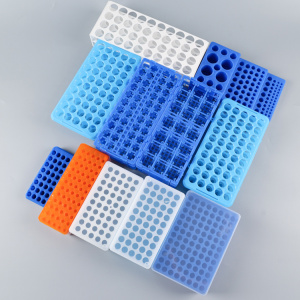Is the ELISA plate white or transparent?
The raw material of Yongyue ELISA plate is special material - polystyrene, which is a safe, reliable and effective carrier in ELISA experiments, and plays an important role in the adsorption of antigens, antibodies or antigen-antibody complexes.
Yongyue ELISA plate adopts a unique surface treatment process, which can show ideal experimental results. It is often used in enzyme-linked immunosorbent assays, such as immunization, identification of transgenic products, and medical clinical diagnosis.
Product Features
1. The raw material is polystyrene, specially designed for ELISA experiments, with good adsorption performance and low blank value.
2. The thickness of the hole is uniform and the diameter of the hole is uniform.
3. Good inter-batch stability and low intra-assay coefficient of variation (CV) difference.
4. Flat bottom design, divided into two types: detachable and non-detachable, which is convenient for customers to use.
5. There are unique letters and numbers on the frame for identification, which is convenient for experimentation.
6. The transparent plate has high transparency at the bottom of the hole.
7. The white-well microtiter plate enhances the luminescent signal and has the characteristics of low background luminescence; the raw materials are well protected from light, which greatly reduces the signal interference between wells.
How to choose?

Choose different colored ELISA plates according to the detection method
Transparent plate - colorimetric detection, white plate - luminescence detection
It should be noted that luminescence detection cannot be performed with general ELISA plates, because the light emitted from the chemiluminescence reaction under normal conditions is isotropic. If a transparent ELISA plate is used, the light will be emitted in the vertical and horizontal directions, thereby Divergence between each pore and pore wall, so that the light absorption value of each pore is affected by the light emitted by adjacent pores.
Choose different ELISA plates according to their high binding capacity
After special treatment on the surface of the ELISA plate, it can bind biological macromolecules with ionic groups or hydrophobic sites or other media (>10kD), and its protein binding capacity can reach 400~500ng IgG/cm2. The high-binding capacity of the ELISA plate can improve the sensitivity, and can relatively reduce the concentration and dosage of the coated protein, but the disadvantage is that it is easy to produce non-specific reactions.
Tips: After the antigen or antibody is coated, the non-ionic detergent cannot effectively block the unbound part of the protein, and the protein must be used as the blocking agent.
——



